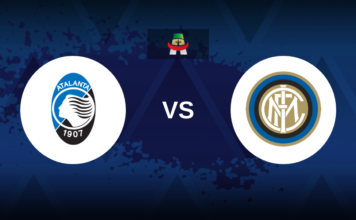In the realm of football, myths and misconceptions often abound, shaping narratives that influence how we perceive the sport.
Here, we unravel seven prominent football myths, challenging preconceived notions and shedding light on the realities beneath the surface.
7. The Goalkeeper’s Near-Post Conundrum: There’s a longstanding myth that goalkeepers shouldn’t get beaten at their near post, often criticized by pundits and fans alike. However, this simplifies the complexities of goalkeeping, disregarding the dynamics of shot power, angle, and the goalkeeper’s positioning. Despite this, the myth persists, fueled by a lack of understanding and awareness of goalkeeping nuances. It’s crucial to acknowledge the expertise required for goalkeeping and recognize that conceding at the near post is sometimes unavoidable, rather than a glaring mistake.
6. Paulo Maldini and Franco Baresi’s Defensive Myth: Paulo Maldini and Franco Baresi are often celebrated as two of AC Milan and football’s greatest defenders, forming what many believe to be an impregnable center-back partnership. However, the specific figures of their partnership have been grossly exaggerated, serving as a prime example of how football myths can overshadow true achievements.
5. Claude Makélélé and the Misattributed Innovation: The popular narrative suggests Claude Makélélé revolutionized football by inventing a specific defensive midfield position, often labeled the “Makélélé role” in England. However, the reality is that midfield anchors and destroyers have been part of football’s fabric for decades, with players like Costinha at Porto and Dunga for Brazil in the 1970 World Cup, performing roles akin to Makélélé’s long before he made his mark in the Premier League. While Makélélé indeed popularized this role in English football and became a template for future midfielders, the claim that he invented the position is a widespread myth and a disservice to football history’s depth and diversity.
4. Referee Conspiracy Theories: The belief that referees are biased against certain teams is arguably the most pervasive myth in modern football. While it’s easier for fans to blame referees for a team’s poor performance, these accusations have escalated to claims of grand conspiracies involving referee associations plotting against teams for trivial reasons. These notions are spread despite a lack of logical motivation and ignore the simple fact that bad decisions are part of the game, influenced by human error rather than malice. Acknowledging that referees, like players, can make mistakes without attributing it to a conspiratorial agenda is essential for a fair appreciation of the sport. This reality check challenges the narrative of victimhood and promotes a more balanced understanding of football’s uncertainties.
3. Football and Politics: An Inseparable Pair: The claim that football and politics should remain separate is a romantic but impractical notion. Football’s inception and evolution are deeply intertwined with social and political movements. Class struggles, national identities, and political ideologies have found expression on the pitch, influencing the sport’s development and significance. From its codified beginnings to modern rivalries, football has been a platform for political expression and contestation. Governments and activists alike have used football to advance their agendas, demonstrating the sport’s power beyond entertainment. Accepting football’s role in societal and political conversations enhances our understanding of its impact, challenging the myth of its neutrality.
2. “2-0 is the Most Dangerous Lead in Football”: This cliché suggests that teams with a 2-0 lead become complacent, leading to losses or draws. Despite its popularity, statistical analysis debunks this myth, showing that teams with a 2-0 lead win over 90% of their games. This narrative likely stems from memorable comebacks, skewing perceptions of a 2-0 lead’s safety. However, the danger lies not in the score itself but in potential shifts in momentum and psychology. Recognizing this helps understand the complexities of football, where outcomes are shaped by much more than a lead. Celebrated comebacks, though thrilling, are exceptions rather than evidence of a 2-0 curse.
1. Lionel Messi and Cristiano Ronaldo: Natural vs. Nurtured: The debate between Lionel Messi and Cristiano Ronaldo often simplifies their success to natural talent versus hard work. However, such narratives do both players a disservice. Messi, despite his innate skill, has undergone rigorous training and made significant lifestyle changes to overcome personal and physical challenges, notably a growth hormone deficiency. Likewise, Ronaldo’s work ethic and discipline have maximized his natural abilities, transforming him into one of football’s elite. Both players have dedicated their lives to football, combining talent with relentless hard work. It’s reductive to credit their achievements solely to either nature or nurture; instead, their storied careers result from a combination of both, alongside unparalleled determination and sacrifice.
These myths, once ingrained in football lore, unravel upon closer inspection, revealing the complexities and nuances that define the beautiful game. By challenging these narratives, we enrich our understanding of football and appreciate its intricacies beyond the surface level.







